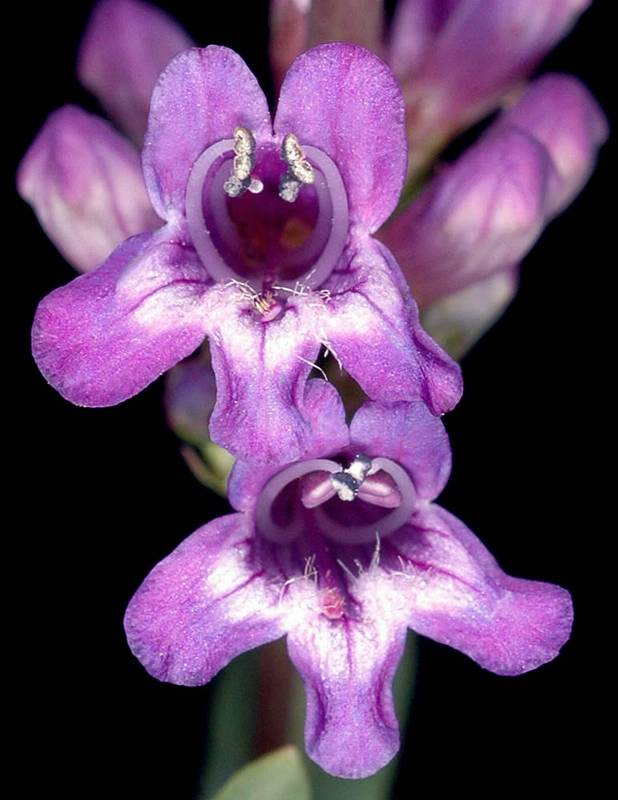Penstemon ovatus
Penstemon euglaucus
egg-leaf beardtongue, broad-leaved penstemon
glaucous beardtongue
Basal leaves opposite, clustered, petiolate, with ovate to sub-cordate blade up to 10 cm. long and half as wide, about equaling the petiole, serrate, hairy like the stem, especially along the mid-vein beneath;
cauline leaves sessile and clasping, more sharply serrate, nearly as large, but more broadly oblong, the upper ovate.
Leaves opposite, entire, the basal ones petiolate, oblanceolate, forming well-developed rosettes, up to 15 cm. long and 2 cm. wide;
cauline leaves few, well-developed, sessile, not over 10 cm. long and 2 cm. wide.
Inflorescence large and open, strongly glandular-hairy;
calyx 3-5 mm. long, broadly lanceolate, with parallel veins;
corolla blue, 15-22 mm. long, glandular-hairy on the outside, the raised portion of the lower petal pale blue and hairy;
corolla strongly bilabiate, the lower lip much the longer;
pollen sacs 0.8-1.1 mm. long, fully dehiscent and becoming opposite, nearly glabrous;
staminode bearded toward the recurved tip.
Inflorescence of 1-several dense verticillasters, the flowers spreading at right angles to the stem;
calyx 3.5-5 mm. long, the 5 segments broadly scarious-margined, abruptly contracted to a narrow, pointed tip;
corolla blue-purple, 11-15 mm. long, bilabiate, the tube expanded, 3-5 mm. wide at the mouth; raised portion of the lower petal bearded;
staminode usually bearded at the expanded tip;
pollen sacs glabrous, ovate, 0.6-1.0 mm. long, not quite opening to the tip.
Capsule 4-6 mm. long.
Capsule 5-6 mm. long



